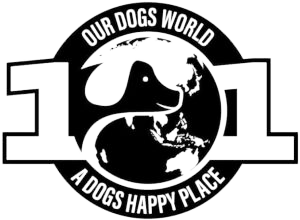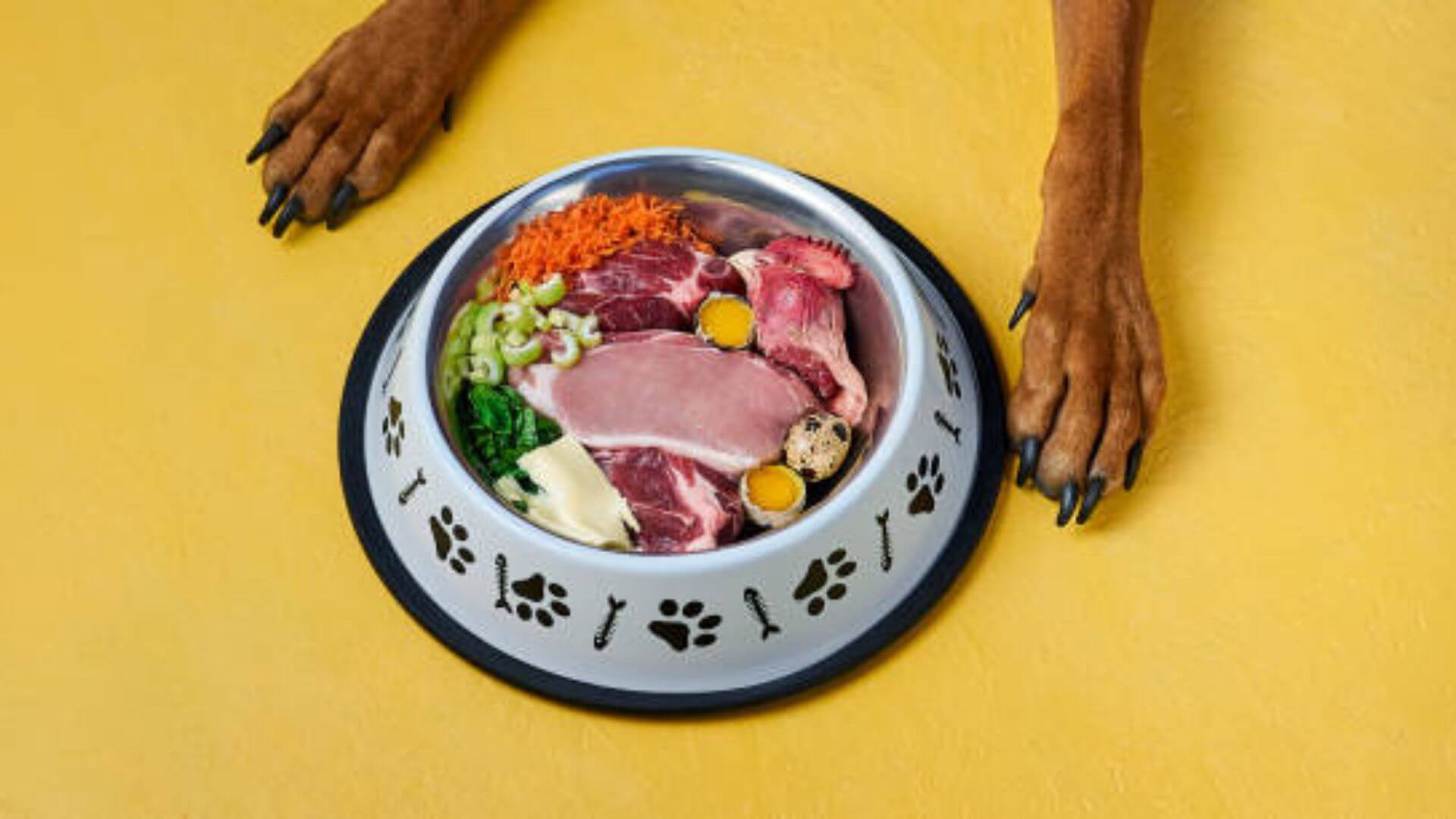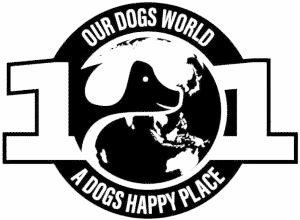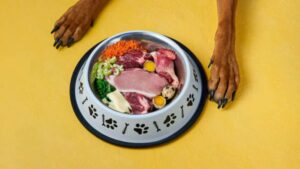A raw food diet for dogs is exactly what it sounds like feeding your pup raw food instead of kibble or canned food. This means that instead of opening a bag of dried-up pellets or cracking open a can of mush, you’ll be serving up raw meat, bones, organs, fruits, and veggies. Some people even add supplements to ensure their dog gets all the necessary nutrients.
The idea behind a raw food diet is that it’s more similar to what dogs ate in the wild before they became domesticated and started eating the processed food we give them today. The theory is that this diet can improve your dog’s overall health, from their skin and coat to their digestion and immune system.
That being said, raw food diets aren’t for everyone or every dog. There are definitely some downsides and risks to consider, like the potential for bacterial contamination or nutritional imbalances. It’s important to research and talk to your vet before making big changes to your dog’s diet.
The idea of feeding dogs a raw food diet isn’t a new concept – in fact, it’s been around for quite a while. The first mention of a raw food diet for dogs dates back to the early 1930s when an Australian veterinarian named Dr. Ian Billinghurst began promoting the idea of feeding dogs a diet that mimicked their wild ancestors.
Billinghurst argued that dogs were meant to eat a diet of raw meat, bones, and vegetables and would promote better health and longevity in our furry friends. He dubbed his diet “BARF” (Biologically Appropriate Raw Food), and it quickly gained popularity among dog owners looking for an alternative to commercial dog food.
Since then, raw food diets have continued to be a topic of interest among dog owners and veterinarians. Some proponents believe that raw food diets are the best way to feed dogs, while others remain skeptical of their benefits and worry about the potential risks. Regardless of your stance, it’s clear that raw food diets are here to stay as a topic of discussion in dog nutrition.
When deciding about our dogs’ health and nutrition, we must be fully informed about all our options. This includes understanding the pros and cons of different diets and feeding methods, such as a raw food diet for dogs.
By discussing the pros and cons of a raw food diet, we can help pet owners make informed decisions about their dog’s nutrition. While a raw food diet may offer certain benefits, such as improved digestion and dental health, it’s also important to be aware of the potential risks, like bacterial contamination or nutritional imbalances.
In discussing the pros and cons, we can help pet owners weigh the potential benefits against the potential risks and decide the best for their dogs. Ultimately, the goal is to promote the health and well-being of our furry friends, and that starts with having open and honest discussions about all the options available to us.
Pros of a Raw Food Diet
Related article – Stella & Chewy’s raw Kibble
“Unleash the wild side of your furry friend with Stella & Chewy’s Wild Red Raw Blend Kibble! Made with high-quality, raw, and organic ingredients, this dry dog food will satisfy your pup’s primal cravings while providing essential nutrients for a healthy and happy life. Give your dog the taste of the wild with every bite – try Stella & Chewy’s today!”
Firstly we will look at the Pros of a raw food diet.
Improved Digestion
One of the potential benefits of a raw food diet for dogs is improved digestion. This is because a raw food diet is generally easier for dogs to digest than processed commercial food.
Raw food diets typically include meat, bones, organs, fruits, and vegetables. These whole foods are often easier for dogs to digest than the processed ingredients in commercial dog food, like grains and fillers. Additionally, the high moisture content in raw food can help prevent issues like constipation and dehydration, which can be common with kibble-based diets.
Some dog owners also report that their dogs experience fewer digestive issues, like diarrhea and vomiting, when on a raw food diet. This may be due to the absence of artificial additives and preservatives that can cause digestive upset in some dogs.
Of course, it’s important to note that every dog is different, and some dogs may not see any improvement in their digestion on a raw food diet. As with any dietary change, it’s important to monitor your dog closely and consult your veterinarian if you have any concerns about their digestion or overall health.
Shinier Coat And Healthier Skin
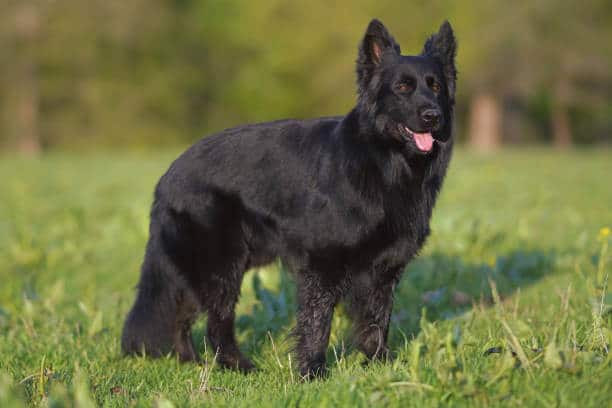
Another potential benefit of a raw food diet for dogs is a shinier coat and healthier skin. A raw diet can give dogs the essential fatty acids, vitamins, and minerals needed to maintain healthy skin and a shiny coat.
Raw food diets typically include fatty fish, which are rich in omega-3 fatty acids, and organ meats high in vitamins A and B. These nutrients are important for maintaining healthy skin and a shiny coat. Additionally, the high moisture content in raw food can help keep your dog’s skin hydrated, which can benefit dogs with dry, itchy skin.
Some dog owners also report that their dogs experience reduced skin allergies and irritation when on a raw food diet. This may be due to the absence of grains and other potential allergens found in commercial dog food.
Of course, it’s important to note that every dog is different, and some dogs may not see any improvement in their skin or coat on a raw food diet. As with any dietary change, it’s important to monitor your dog closely and consult with your veterinarian if you have any concerns about their skin or coat health.
More Energy And Better Overall Health
Another potential benefit of a raw food diet for dogs is that it may lead to more energy and better overall health. This is because a raw food diet can provide dogs with high-quality protein, essential vitamins and minerals, and other nutrients that can support their overall health and well-being.
Raw food diets typically include raw meat, a high-quality protein source that can help support your dog’s muscle development and energy levels. Additionally, raw food diets can be rich in vitamins and minerals, which are important for maintaining a strong immune system, healthy bones and joints, and good overall health.
Some dog owners also report that their dogs have more energy and vitality when on a raw food diet. This may be due to the absence of artificial additives and preservatives that can cause lethargy and other health issues in some dogs.
Of course, it’s important to note that every dog is different, and some dogs may not see any improvement in their energy levels or overall health on a raw food diet. As with any dietary change, it’s important to monitor your dog closely and consult with your veterinarian if you have any concerns about their energy levels or overall health.
Better Dental Health
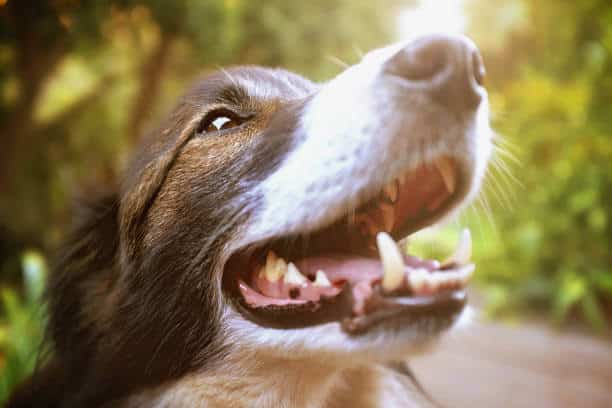
Another potential benefit of a raw food diet for dogs is better dental health. This is because a raw food diet typically includes raw meat and bones, which can help keep your dog’s teeth clean and healthy.
When dogs chew on raw meat and bones, it helps to remove plaque and tartar buildup on their teeth. This can reduce the risk of dental issues like gum disease, tooth decay, and bad breath. Additionally, chewing on bones can help strengthen your dog’s jaw and keep its teeth strong and healthy.
It’s important to note that not all bones are safe for dogs to chew on, and choosing bones that are appropriate for your dog’s size and chewing ability is important. Your veterinarian can help you choose safe and appropriate bones for your dog.
Of course, it’s important to note that every dog is different, and some dogs may not see any improvement in their dental health on a raw food diet. As with any dietary change, it’s important to monitor your dog closely and consult with your veterinarian if you have any concerns about their dental health.
Reduced Risk Of Certain Diseases
Another potential benefit of a raw food diet for dogs is a reduced risk of certain diseases. This is because a raw diet can provide dogs with high-quality nutrition supporting their immune system and overall health.
For example, a raw food diet can be rich in antioxidants, which are important for fighting off free radicals that can cause cellular damage and increase the risk of diseases like cancer. Additionally, a raw food diet can be low in carbohydrates and high in protein, which can help manage conditions like diabetes and obesity.
Some dog owners also report that their dogs experience a reduction in certain health issues, like skin allergies and gastrointestinal issues, when on a raw food diet. This may be due to the absence of potential allergens and irritants found in commercial dog food.
Of course, it’s important to note that every dog is different, and some dogs may not see any improvement in their disease risk on a raw food diet. As with any dietary change, it’s important to monitor your dog closely and consult with your veterinarian if you have any concerns about their overall health or risk of certain diseases.
More Control Over Ingredients
Another potential benefit of a raw food diet for dogs is that it gives pet owners more control over the ingredients in their dog’s food. With a raw food diet, you have the ability to choose the specific meats, bones, organs, fruits, and vegetables that go into your dog’s diet.
This can benefit dogs with specific dietary needs or allergies, allowing you to customize their diet to meet their needs. Additionally, you can avoid potential allergens and irritants found in commercial dog food, like grains, soy, and artificial additives and preservatives.
Having more control over your dog’s diet can also give you peace of mind and help you feel more connected to your dog’s health and well-being. By preparing your dog’s food yourself, you can ensure that they are getting high-quality, nutritious ingredients that are free from potential contaminants and fillers.
Of course, it’s important to note that preparing a raw food diet can be time-consuming and requires careful attention to detail to ensure your dog gets all the necessary nutrients. It’s important to research and consult with your veterinarian to ensure you provide your dog with a balanced and nutritious diet.
Cons of a Raw Food Diet
Ok, now let’s look at the cons, shall we?
Risk Of Bacterial Contamination
One of the potential risks of a raw food diet for dogs is the risk of bacterial contamination. Raw meat, bones, and organs can contain harmful bacteria like Salmonella and E. coli, which can be dangerous for dogs and humans.
When preparing a raw food diet for your dog, handling the ingredients carefully and following strict food safety practices is important. This may include washing your hands frequently, cleaning all surfaces and utensils thoroughly, and storing raw ingredients separately from other foods.
Additionally, it’s important to choose high-quality ingredients and source them from reputable suppliers. This can help reduce the risk of contamination and ensure your dog gets safe nutritious food.
It’s also important to note that dogs who consume raw food diets can shed harmful bacteria in their feces, which can be a health risk for other animals and humans in the household. It’s important to clean up after your dog promptly and practice good hygiene to reduce the risk of bacterial contamination.
Overall, while the risk of bacterial contamination is a potential concern with a raw food diet, it can be managed with careful handling and preparation practices. It’s important to consult with your veterinarian and follow their recommendations for ensuring a safe and nutritious diet for your dog.
Nutritional Imbalance
Another potential risk of a raw food diet for dogs is nutritional imbalance. Because a raw food diet typically excludes grains and other potential sources of carbohydrates, ensuring your dog gets all the nutrients they need for optimal health can be challenging.
To ensure a balanced diet, it’s important to include a variety of ingredients in your dog’s raw food diet, including different types of meats, organs, fruits, and vegetables. Additionally, some dog owners add supplements like fish oil, probiotics, or multivitamins to ensure their dog gets all the essential nutrients they need.
It’s also important to note that different dogs have different nutritional requirements, depending on factors like their age, breed, and activity level. It’s important to consult your veterinarian to determine the appropriate diet for your dog and closely monitor their health for signs of nutritional deficiencies or imbalances.
Overall, while the risk of nutritional imbalance is a potential concern with a raw food diet, it can be managed carefully and carefully. It’s important to consult with your veterinarian and follow their recommendations for ensuring a balanced and nutritious diet for your dog.
Risk Of Choking On Bones
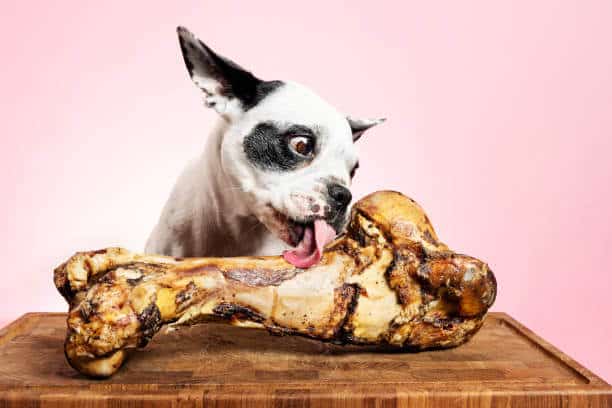
Another potential risk of a raw food diet for dogs is choking on bones. While chewing on bones can benefit a dog’s dental health, choosing bones appropriate for your dog’s size and chewing ability is important.
Bones that are too small or soft can break into small pieces that can be swallowed whole, increasing the risk of choking or gastrointestinal obstruction. On the other hand, bones that are too large or hard can cause dental fractures or other injuries.
When choosing bones for your dog, select ones that are appropriately sized and provide your dog with a good chewing challenge without being too difficult to break down. Additionally, it’s important to monitor your dog closely while chewing on bones to ensure that they are not swallowing large pieces or showing any signs of distress.
If you have any concerns about your dog’s ability to chew bones safely, it’s important to consult with your veterinarian. They can help you choose appropriate bones for your dog’s size and chewing ability and provide guidance on safe chewing practices.
Cost And Time Commitment
Another potential drawback of a raw food diet for dogs is the cost and time commitment required to prepare and maintain the diet. Raw meat, bones, and organs can be more expensive than commercial dog food, and preparing a raw food diet can be time-consuming.
Additionally, because raw food diets require careful attention to detail and monitoring to ensure your dog gets all the nutrients they need, it can be more challenging to manage than simply feeding commercial dog food. This may require more time and effort, including researching recipes, sourcing high-quality ingredients, and preparing and storing the food.
If cost or time is a concern, it’s important to consider the potential benefits of a raw food diet and weigh them against the potential drawbacks. There may be ways to reduce the cost or time commitment, such as buying bulk or preparing meals in advance.
Ultimately, choosing a diet that meets your dog’s nutritional needs is important while being feasible and sustainable for you. If a raw food diet is not feasible or sustainable for you, many high-quality commercial dog foods can provide balanced nutrition for your dog.
Difficulty In Ensuring A Balanced Diet
Ensuring a balanced diet is one of the potential challenges of a raw food diet for dogs. Because a raw food diet typically excludes grains and other potential sources of carbohydrates, ensuring that your dog gets all the essential nutrients they need for optimal health can be challenging.
To ensure a balanced diet, it’s important to include a variety of ingredients in your dog’s raw food diet, including different types of meats, organs, fruits, and vegetables. Additionally, paying close attention to the ratios of macronutrients (protein, fat, and carbohydrates) to ensure that your dog gets the appropriate balance for their needs is important.
Some dog owners also choose to add supplements like fish oil, probiotics, or multivitamins to ensure their dog gets all the essential nutrients they need.
It’s important to note that ensuring a balanced diet on a raw food diet can be more challenging than with commercial dog food, and it may require more planning and monitoring to ensure that your dog is getting all the essential nutrients they need.
If you have any concerns about ensuring a balanced diet on a raw food diet, it’s important to consult with your veterinarian. They can guide selecting appropriate ingredients and supplements and monitor your dog’s health for signs of nutritional deficiencies or imbalances.
Potential For Injury During Food Preparation
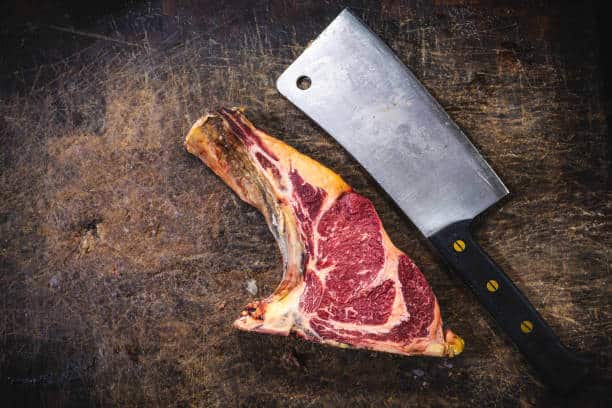
Another potential risk of a raw food diet for dogs is the potential for injury during food preparation. Handling raw meat, bones, and organs can pose a risk of injury from sharp objects like knives or cross-contamination with harmful bacteria.
When preparing a raw food diet for your dog, following strict food safety practices is important, including washing your hands frequently, cleaning all surfaces and utensils thoroughly, and storing raw ingredients separately from other foods. Additionally, it’s important to use appropriate tools and techniques to minimize the risk of injury.
If you are uncomfortable preparing raw food, pre-made options are available for purchase. Choosing high-quality, reputable brands and carefully read labels and ingredient lists is important to ensure the food meets your dog’s nutritional needs.
Overall, while the potential for injury during food preparation is a concern with a raw food diet, it can be managed with careful handling and preparation practices. It’s important to do your research, follow safe food handling practices, and consult with your veterinarian to ensure a safe and nutritious diet for your dog.
Conclusion
A raw food diet for dogs has potential benefits such as improved digestion, a shinier coat and healthier skin, more energy and better overall health, better dental health, more control over ingredients, and reduced risk of certain diseases. However, there are also potential risks and drawbacks, such as the risk of bacterial contamination, nutritional imbalance, choking on bones, cost and time commitment, difficulty in ensuring a balanced diet, and potential for injury during food preparation. It’s important to carefully consider these factors and consult with your veterinarian before deciding if a raw food diet is right for your dog.
It’s important to emphasize that every dog is unique and has different nutritional needs, preferences, and health conditions. While a raw food diet may be beneficial for some dogs, it may not be appropriate for others. Before deciding whether to feed your dog a raw food diet, it’s important to consult with your veterinarian to determine if it is a good fit for your dog’s individual needs.
Factors such as age, breed, activity level, and health conditions can all affect your dog’s nutritional needs and dietary requirements. Your veterinarian can help you determine if a raw food diet is appropriate for your dog and provide guidance on selecting appropriate ingredients and supplements, as well as monitoring your dog’s health for signs of nutritional deficiencies or imbalances.
Ultimately, the most important consideration when choosing a diet for your dog is its overall health and well-being. By working closely with your veterinarian and paying close attention to your dog’s needs, you can ensure they get the nutrition they need to thrive.
If you are considering a raw food diet for your dog, it’s important to do your research and consult with your veterinarian to ensure that you are making an informed decision. Here are some resources for further research and consultation:
- The American Veterinary Medical Association (AVMA) has a comprehensive resource on pet food diets, including information on the risks and benefits and guidance on selecting and preparing a raw food diet. You can find it here: https://www.avma.org/resources/pet-owners/raw-pet-food-and-safety
- The American Animal Hospital Association (AAHA) has also published guidelines on raw food diets for pets, which can be found here: https://www.aaha.org/aaha-guidelines/raw-protein-diet-for-dogs-and-cats/
- Many reputable brands are available if you are interested in a pre-made raw food diet. Some popular options include Primal Pet Foods, Stella & Chewy’s, and Northwest Naturals.
- Finally, it’s important to consult with your veterinarian before making any dietary changes for your dog. Your veterinarian can help you determine if a raw food diet is appropriate for your dog, as well as provide guidance on selecting appropriate ingredients and supplements and monitoring your dog’s health for signs of nutritional deficiencies or imbalances.
Remember… Owning a dog should be FUN, not a chore!
My name is Mark and I currently live in Australia.
I am passionate about educating Doggie parents and helping you to make the best possible decisions to help your dog live a long, happy and healthy life.
As a Dog trainer & behaviorist I have always used The Dog Solution methods with a 100% success rate.
Feel free to contact us, and stay tuned for updates and informative posts on dog care, training, diet, and much more!
“Dogs do speak, but only to those who know how to listen” – Orhan Pamuk

